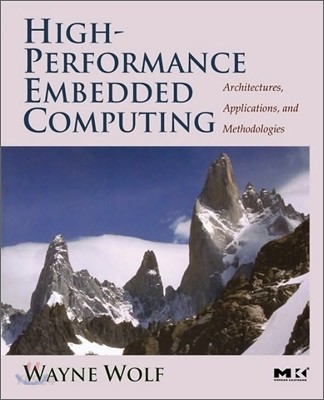서브메뉴
검색
본문
Powered by NAVER OpenAPI
-

-
High-Performance Embedded Computing: Architectures, Applications, and Methodologies
저자 : Wayne Wolf
출판사 : Morgan Kaufmann
출판년 : 2006-09-25
정가 : $85.95, ISBN : 9780123694850
책소개
Over the past several years, embedded systems have emerged as an integral though unseen part of many consumer, industrial, and military devices. The explosive growth of these systems has resulted in embedded computing becoming an increasingly important discipline. The need for designers of high-performance, application-specific computing systems has never been greater, and many universities and colleges in the US and worldwide are now developing advanced courses to help prepare their students for careers in embedded computing.
High-Performance Embedded Computing: Architectures, Applications, and Methodologies is the first book designed to address the needs of advanced students and industry professionals. Focusing on the unique complexities of embedded system design, the book provides a detailed look at advanced topics in the field, including multiprocessors, VLIW and superscalar architectures, and power consumption. Fundamental challenges in embedded computing are described, together with design methodologies and models of computation. HPEC provides an in-depth and advanced treatment of all the components of embedded systems, with discussions of the current developments in the field and numerous examples of real-world applications.
Covers advanced topics in embedded computing, including multiprocessors, VLIW and superscalar architectures, and power consumption
Provides in-depth coverage of networks, reconfigurable systems, hardware-software co-design, security, and program analysis
Includes examples of many real-world embedded computing applications (cell phones, printers, digital video) and architectures (the Freescale Starcore,TI OMAP multiprocessor, the TI C5000 and C6000 series, and others)
목차
1 Embedded Computing
1.1 The Landscape of High-Performance Embedded Computing
1.2 Example Applications
1.3 Design Goals
1.4 Design Methodologies
1.5 Models of Computation
1.6 Reliability, Safety, and Security
1.7 Consumer Electronics Architectures
1.8 Summary and a Look Ahead
What We Learned
Further Reading
Questions
Lab Exercises
2 CPUs
2.1 Introduction
2.2 Comparing Processors
2.3 RISC Processors and Digital Signal Processors
2.4 Parallel Execution Mechanisms
2.5 Variable-Performance CPU Architectures
2.6 Processor Memory Hierarchy
2.7 Additional CPU Mechanisms
2.8 CPU Simulation
2.9 Automated CPU Design
2.10 Summary
What We Learned
Further Reading
Questions
Lab Exercises
3 Programs
3.1 Introduction
3.2 Code Generation and Back-End Compilation
3.3 Memory-Oriented Optimizations
3.4 Program Performance Analysis
3.5 Models of Computation and Programming
3.6 Summary
What We Learned
Further Reading
Questions
Lab Exercises
4 Processes and Operating Systems
4.1 Introduction
4.2 Real-Time Process Scheduling
4.3 Languages and Scheduling
4.4 Operating System Design
4.5 Verification
4.6 Summary
What We Learned
Further Reading
Questions
Lab Exercises
5 Multiprocessor Architectures
5.1 Introduction
5.2 Why Embedded Multiprocessors?
5.3 Multiprocessor Design Techniques
5.4 Multiprocessor Architectures
5.5 Processing Elements
5.6 Interconnection Networks
5.7 Memory Systems
5.8 Physically Distributed Systems and Networks
5.9 Multiprocessor DesignMethodologies and Algorithms
5.10 Summary
What We Learned
Further Reading
Questions
Lab Exercises
6 Multiprocessor Software
6.1 Introduction
6.2 What Is Different About Embedded Multiprocessor Software?
6.3 Real-Time Multiprocessor Operating Systems
6.4 Services and Middleware for Embedded Multiprocessors
6.5 Design Verification
6.6 Summary
What We Learned
Further Reading
Questions
Lab Exercises
7 Hardware/Software Co-Design
7.1 Introduction
7.2 Design Platforms
7.3 Performance Analysis
7.4 Hardware/Software Co-Synthesis Algorithms
7.5 Hardware/Software Co-Simulation
7.6 Summary
What We Learned
Further Reading
Questions
Lab Exercises
Glossary